Abstract
1. The human isolated basilar artery has been used as a model to investigate the aetiology of cerebral arterial spasm associated with rupture of intracranial aneurysms. 2. The isolated artery is contracted by 5-hydroxytryptamine, noradrenaline, six prostaglandins and cerebrospinal fluid from patients with ruptured aneurysms and cerebral arterial spasm. 3. These contractions are reversed by (+/-)--, (+)-- and (--)-propranolol in concentrations known to produce local anaesthetic effects on isolated frog sciatic nerve; the (+) isomer was 2.5 to 10 times more potent (-)-propranolol in antagonising all contractions. 4. As the two isomers are known to have similar local anaesthetic potency but (-)-propranolol has greater beta-adrenoreceptor blocking effects we conclude that the antagonistic effects described do not involve beta-adrenoreceptor blockade. 5. The data indicate that propranolol may be of clinical use in reversing cerebral arterial spasm.
Full text
PDF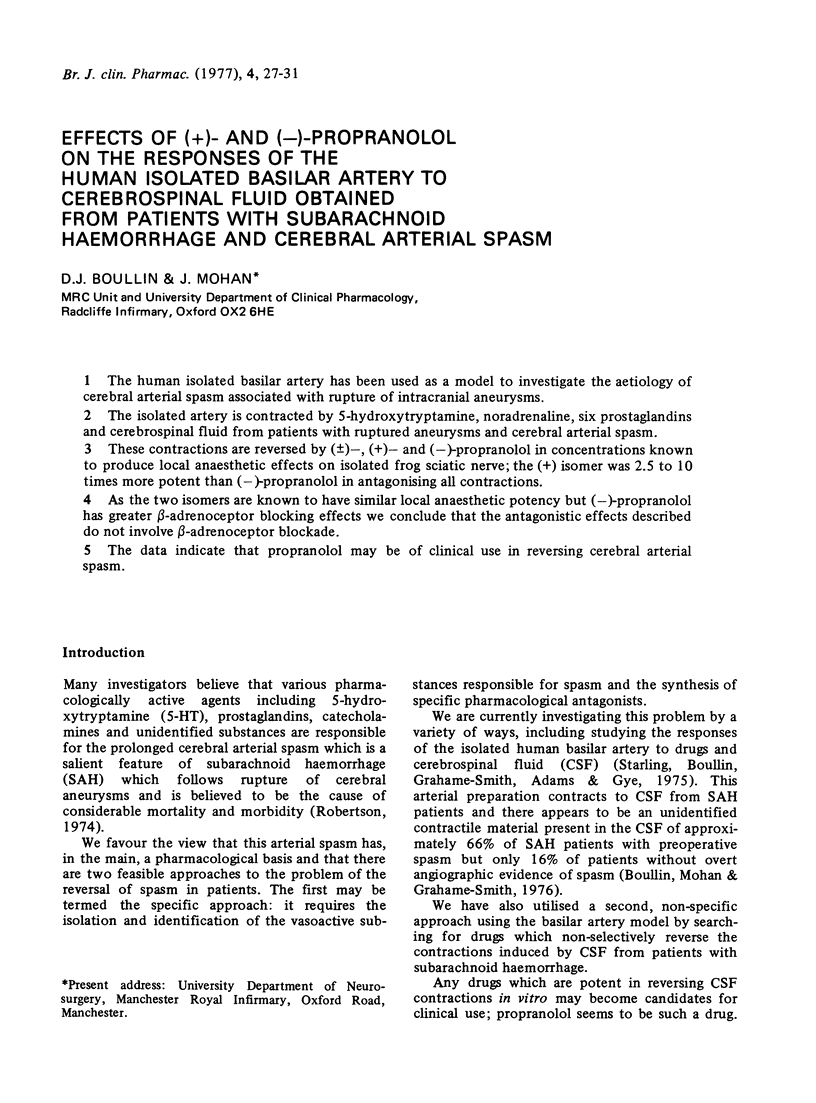
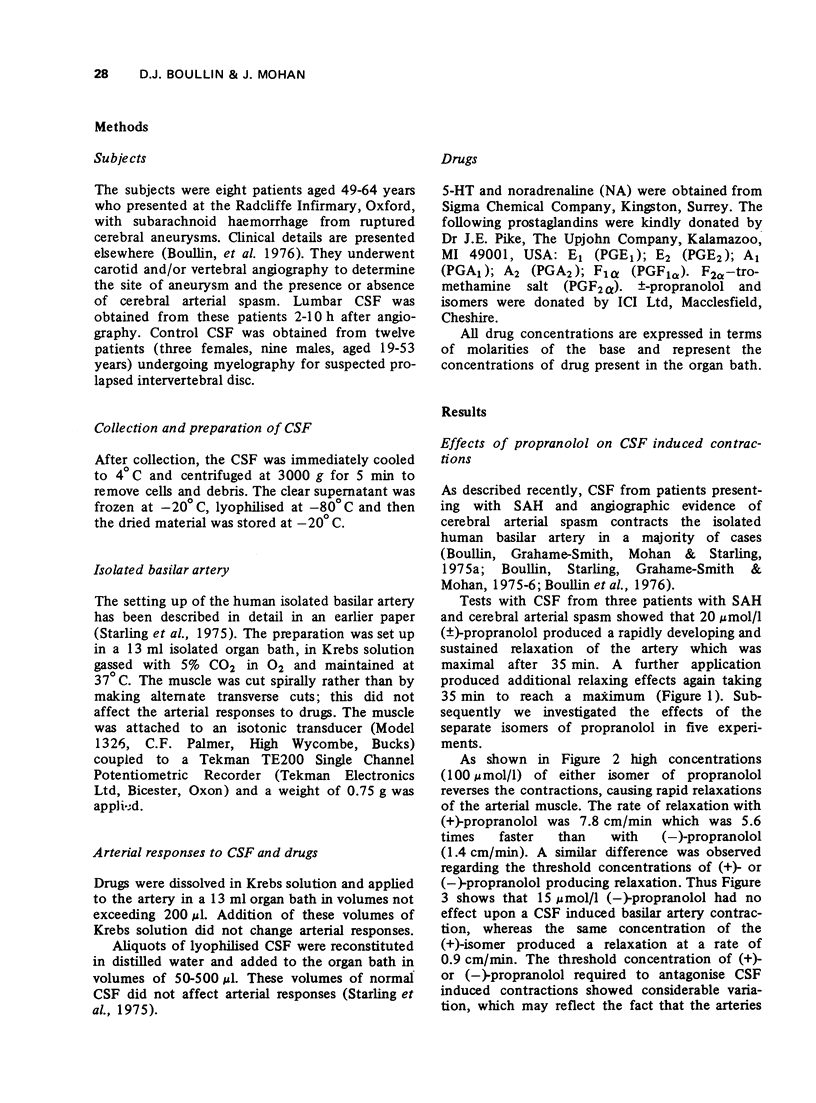
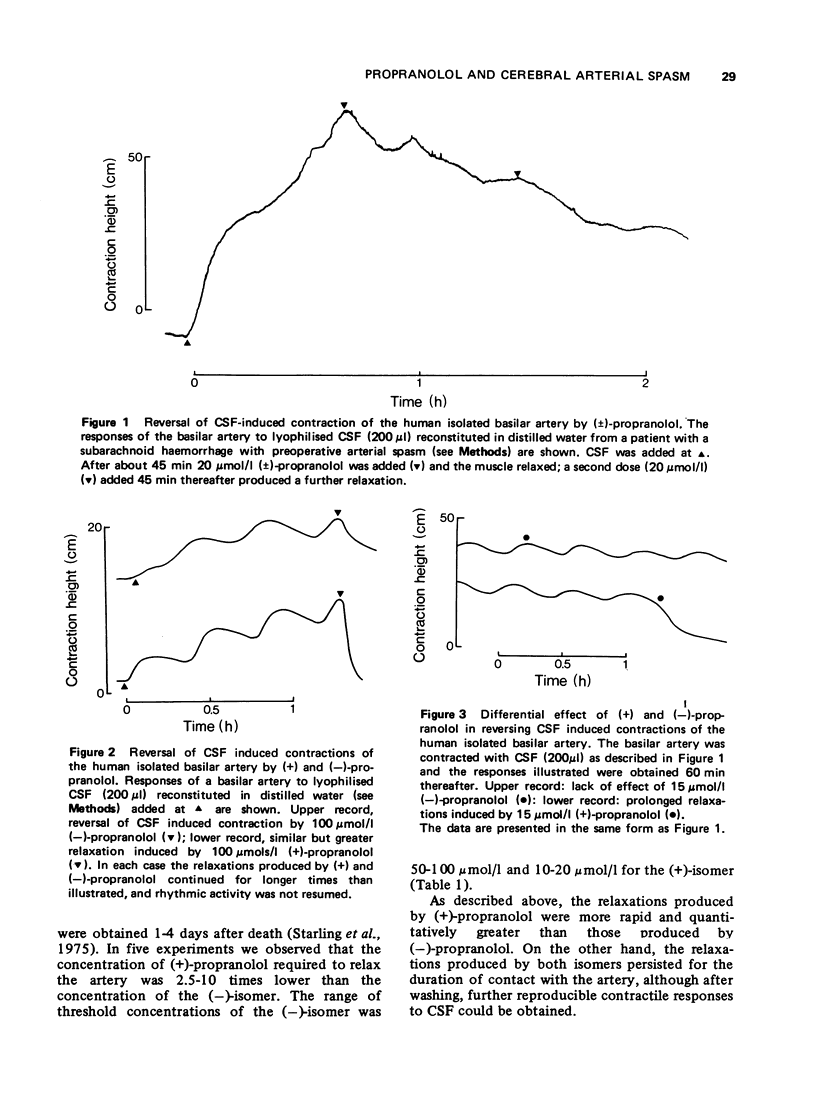
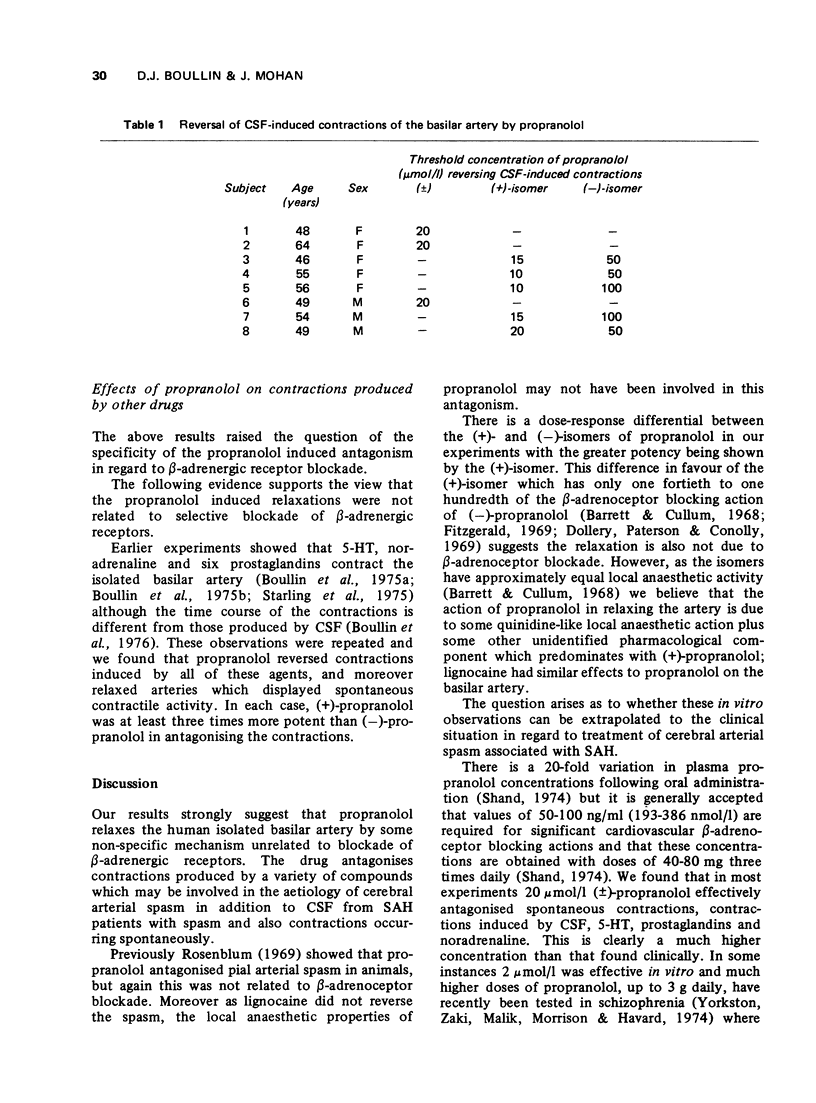
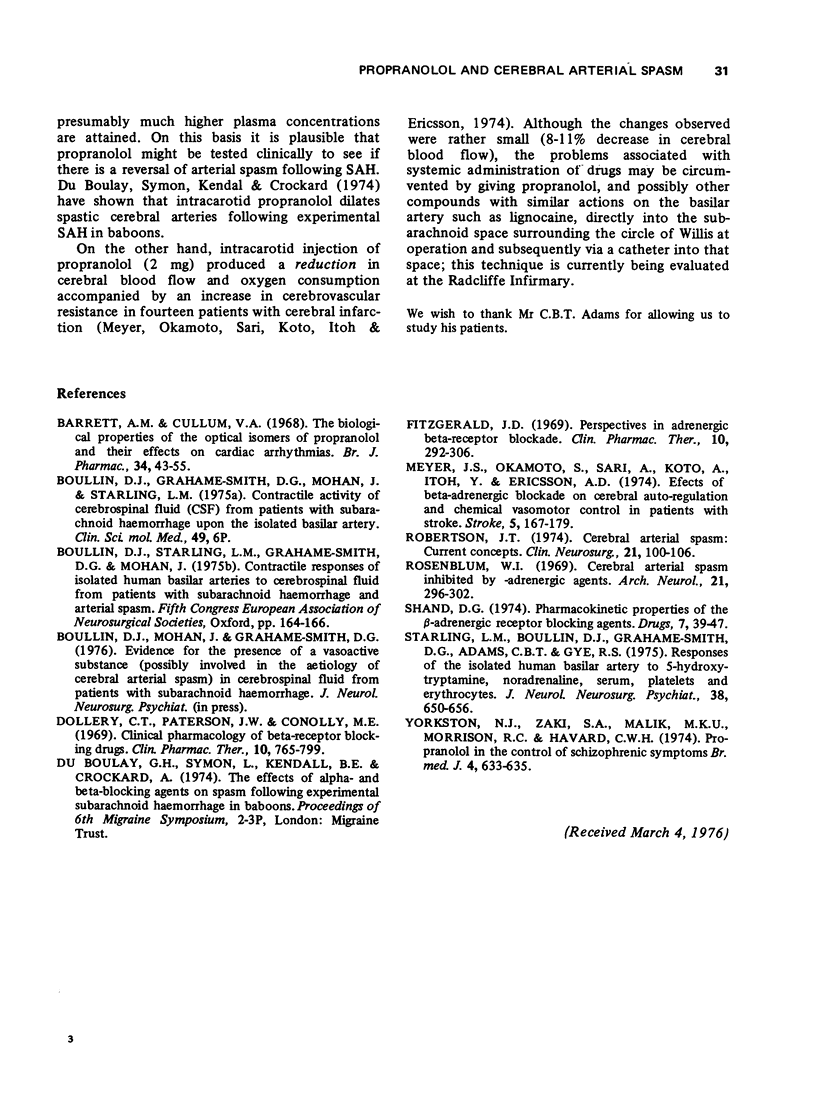
Selected References
These references are in PubMed. This may not be the complete list of references from this article.
- Dollery C. T., Paterson J. W., Conolly M. E. Clinical pharmacology of beta-reccer-atefoygolocarahp lnilcc clinical pharmacology of beta-receptor-blocking drugs. Clin Pharmacol Ther. 1969 Nov-Dec;10(6):765–799. [PubMed] [Google Scholar]
- Fitzgerald J. D. Perspectives in adrenergic beta-receptor blockade. Clin Pharmacol Ther. 1969 May-Jun;10(3):292–306. doi: 10.1002/cpt1969103292. [DOI] [PubMed] [Google Scholar]
- Meyer J. S., Okamoto S., Sari A., Koto A., Itoh Y., Ericsson A. D. Effects of beta-adrenergic blockade on cerebral autoregulation and chemical vasomotor control in patients with stroke. Stroke. 1974 Mar-Apr;5(2):167–179. doi: 10.1161/01.str.5.2.167. [DOI] [PubMed] [Google Scholar]
- Robertson J. T. Cerebral arterial spasm: current concepts. Clin Neurosurg. 1974;21:100–106. doi: 10.1093/neurosurgery/21.cn_suppl_1.100. [DOI] [PubMed] [Google Scholar]
- Rosenblum W. I. Cerebral arteriolar spasm inhibited by beta-adrenergic blocking agents. Arch Neurol. 1969 Sep;21(3):296–302. doi: 10.1001/archneur.1969.00480150086011. [DOI] [PubMed] [Google Scholar]
- Starling L. M., Boullin D. J., Grahame-Smith D. G., Adams C. B., Gye R. S. Responses of isolated human basilar arteries to 5-hydroxytryptamine, noradrenaline, serum, platelets, and erythrocytes. J Neurol Neurosurg Psychiatry. 1975 Jul;38(7):650–656. doi: 10.1136/jnnp.38.7.650. [DOI] [PMC free article] [PubMed] [Google Scholar]
- Yorkston N. J., Zaki S. A., Malik M. K., Morrison R. C., Havard C. W. Propranolol in the control of schizophrenic symptoms. Br Med J. 1974 Dec 14;4(5945):633–635. doi: 10.1136/bmj.4.5945.633. [DOI] [PMC free article] [PubMed] [Google Scholar]


